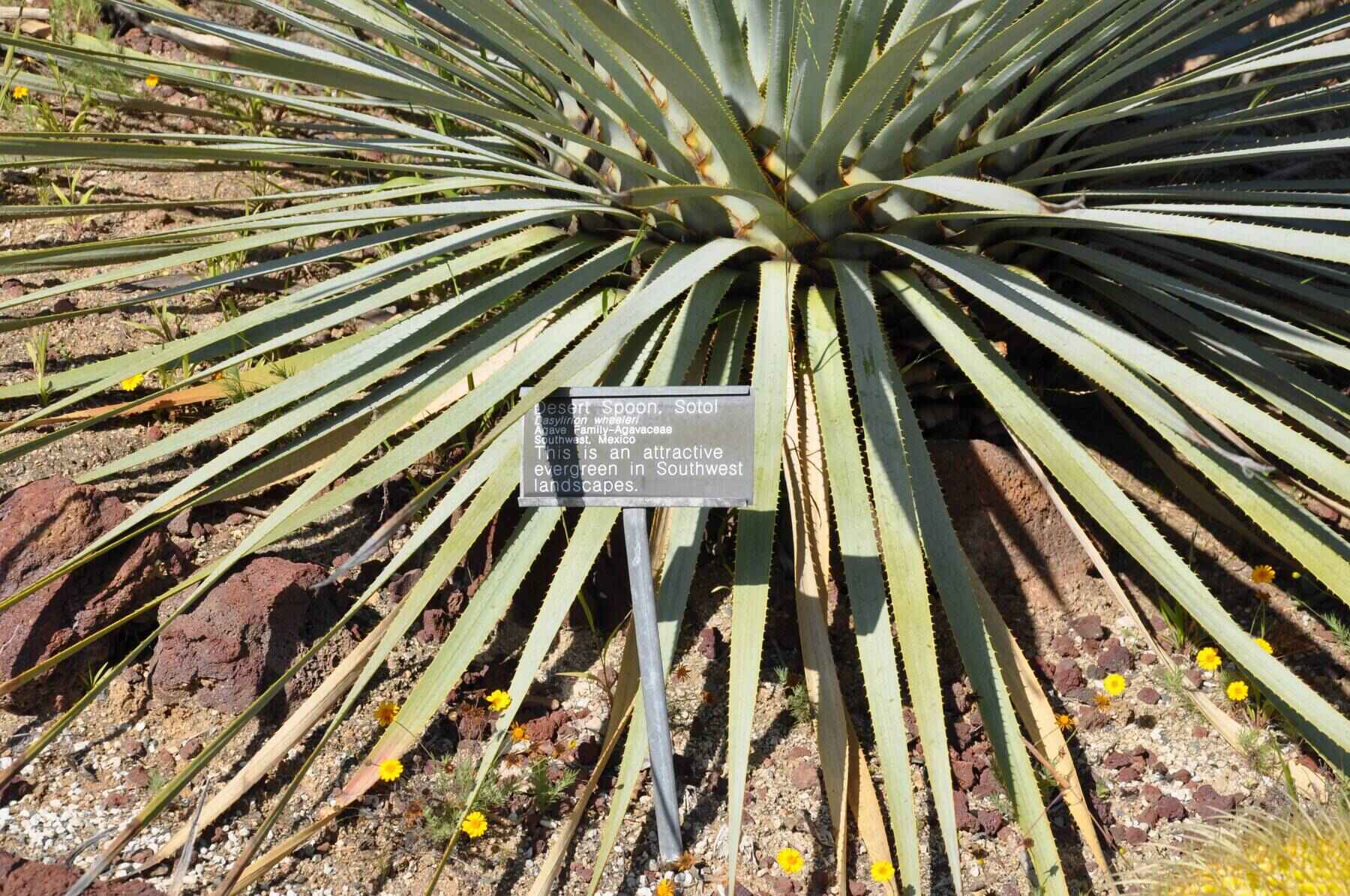
The desert spoon plant, also known as Dasylirion wheeleri, is a striking and resilient succulent native to the arid regions of North America. Its unique appearance and adaptability make it a popular choice for landscaping in dry climates. In this article, we will delve into 18 fascinating facts about the desert spoon plant, shedding light on its characteristics, uses, and cultural significance. From its distinctive rosette shape to its historical relevance among indigenous communities, the desert spoon plant offers a wealth of intriguing details waiting to be explored. Whether you're a plant enthusiast, a gardener seeking drought-tolerant options, or simply curious about the wonders of the natural world, these facts will unveil the allure and versatility of the desert spoon plant. Join us on a journey through the remarkable features and lore of this remarkable succulent.
Key Takeaways:
- The Desert Spoon plant is a resilient succulent with a striking appearance, edible flower stalks, and medicinal properties, making it a valuable plant in arid landscapes and for indigenous communities.
- With its slow growth rate, fire-resistant qualities, and ecological importance, the Desert Spoon plant is a symbol of adaptability and cultural significance, captivating both wildlife and human admirers.
It’s a Drought-Tolerant Plant
The Desert Spoon plant is well adapted to survive in dry environments, making it an excellent choice for xeriscaping and water-wise landscaping.
Native to the Chihuahuan Desert
This plant is native to the Chihuahuan Desert, which spans parts of Mexico, the United States, and New Mexico.
Long Lifespan
Desert Spoon plants have an impressive lifespan, with some specimens living up to 50 years or more.
Versatile Uses
Indigenous peoples have traditionally used the Desert Spoon plant for various purposes, including making tools, food, and beverages.
Unique Appearance
The plant’s distinctive rosette of long, narrow leaves gives it a striking and sculptural appearance, making it a popular choice for ornamental landscaping.
Edible Flower Stalks
The Desert Spoon plant produces edible flower stalks, which have been utilized in traditional cooking and brewing practices.
Medicinal Properties
Indigenous communities have used the plant for its medicinal properties, employing it to treat various ailments.
Wildlife Habitat
The Desert Spoon plant provides a habitat and a food source for diverse wildlife, including birds and insects.
Slow Growth Rate
This plant has a slow growth rate, adding to its resilience and longevity in arid environments.
Fire-Resistant Qualities
The Desert Spoon plant exhibits fire-resistant characteristics, making it well-suited for fire-prone regions.
Cultivation in Landscaping
It is a popular choice for landscaping in arid regions due to its low maintenance requirements and striking visual appeal.
Symbolic Significance
The plant holds cultural and symbolic significance for indigenous communities, often featuring in traditional ceremonies and folklore.
Fibrous Leaves
The fibrous leaves of the Desert Spoon plant have been used to create textiles and crafts by indigenous peoples.
Ecological Importance
The plant plays a crucial role in desert ecosystems, contributing to soil stabilization and erosion control.
Adaptation to Harsh Climates
Its ability to thrive in harsh climates showcases its remarkable adaptability and resilience.
Modern Applications
In addition to its traditional uses, the Desert Spoon plant is now being explored for its potential in sustainable and eco-friendly products.
Unique Inflorescence
The Desert Spoon plant produces a unique inflorescence, adding to its allure and visual interest.
Conservation Efforts
Conservation initiatives are underway to protect and preserve the Desert Spoon plant and its natural habitat.
The Desert Spoon plant is truly a remarkable species, embodying resilience, adaptability, and cultural significance. With its unique attributes and ecological importance, it continues to captivate and inspire admiration.
Conclusion
In conclusion, desert spoon plants are intriguing succulents that add a touch of rugged beauty to arid landscapes. Their striking appearance, low maintenance requirements, and various practical uses make them a valuable addition to any garden or xeriscape. Whether you're drawn to their unique foliage, curious about their ecological significance, or interested in their historical uses, desert spoon plants offer a wealth of fascinating attributes to explore. By understanding and appreciating these remarkable plants, we can gain a deeper appreciation for the natural world and the extraordinary adaptations that enable life to thrive in even the harshest environments.
FAQs
What are the ideal growing conditions for desert spoon plants?
Desert spoon plants thrive in well-draining soil and require plenty of sunlight. They are well-suited to arid environments and are tolerant of drought conditions, making them ideal for xeriscaping.
How do you propagate desert spoon plants?
Desert spoon plants can be propagated from seeds or offsets. When propagating from offsets, it's essential to allow the cut ends to callus before planting to prevent rot.
Was this page helpful?
Our commitment to delivering trustworthy and engaging content is at the heart of what we do. Each fact on our site is contributed by real users like you, bringing a wealth of diverse insights and information. To ensure the highest standards of accuracy and reliability, our dedicated editors meticulously review each submission. This process guarantees that the facts we share are not only fascinating but also credible. Trust in our commitment to quality and authenticity as you explore and learn with us.
